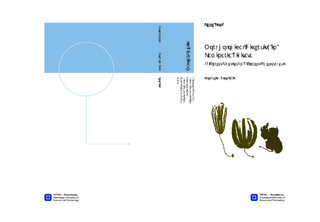| dc.description.abstract | Laminaria digitata-like specimens from the Trondheimsfjord, Hitra and Svalbard were studied using traditional morphological characteristics together with DNA barcoding of the mtDNA COI-gene. The phylogenetic analyses based on the mtDNA COI sequence data identified two species in the material from the mainland of Norway; Laminaria digitata and Laminaria hyperborea, while the material from Svalbard was identified as Saccharina groenlandica, which has likely been misidentified as L. digitata in the past. Both L. digitata and L. hyperborea from Brænnebukta, the Trondheimsfjord, showed large seasonal variability in the morphology of the lamina, from a narrow lamina and a great angle between stipe and the lamina in February to a wide lamina and small angle between stipe and the lamina in September. Based on the large seasonality in lamina morphology identified in this study, the best way to distinguish between L. digitata and L. hyperborea is to look at the shape and flexibility of the stipe. Laminaria hyperborea has a stiff and close to circular cross sections of stipe, while L. digitata has a more flattened cross sections and bendable stipe. Several different phenotypes of L. digitata were found in the same site in Brænnebukta, indicating that there are several factors affecting the morphology of the specimens; these comprise environmental factors, genetic differences, mechanical influences and shading between specimens.Saccharina groenlandica collected around Svalbard seemed to be affected by local environmental conditions; showing large variability in morphology both of the stipe and the lamina depending on where they were collected. Since S. groenlandica is very plastic it is difficult to describe any distinct morphological characters that distinguish it from L. digitata, but results indicates that S. groenlandica has a shorter stipe than L. digitata. The results of the study suggest that S. groenlandica is more abundant than L. digitata in Svalbard waters. | nb_NO |

